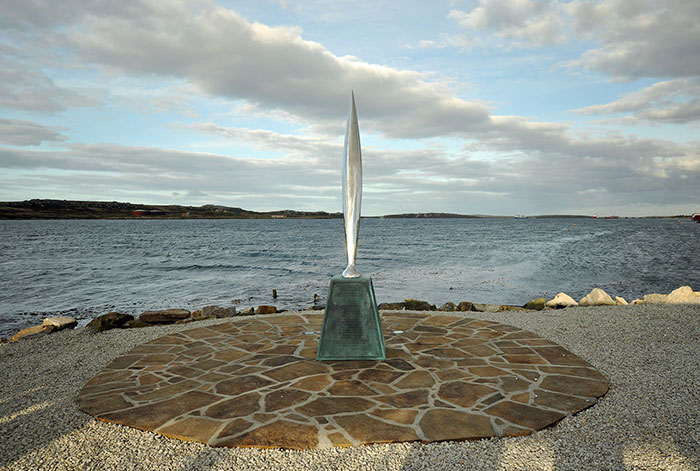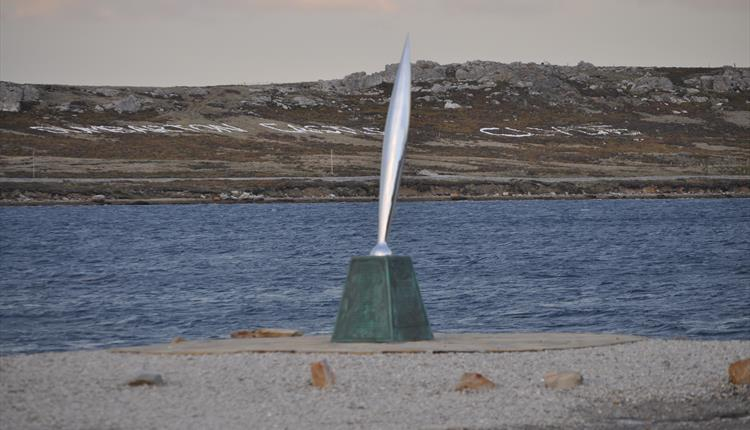The Southern Antarctic Monument
Oliver Barratt's Southern Antarctic Monument is divided into two sections that are separated by 8,000 kilometers. Roderick Rhys-Jones, president of the British Antarctic Monuments Trust (BAMT), told the crowd that the northern part of the sculpture, consisting of two English oak columns carved and positioned to enclose an extended ellipse between them, had been erected on the grounds of the Polar Institute Scott in Cambridge. As if the wooden north half were its molding, the south monument offers that shape in stainless steel. The mirror-polished metal needle, standing 3.25m tall and 350mm broad at its widest point, slanted south, notably towards Stanley Harbor, where the dead would depart for the South Pole.
Oliver Barratt's design, according to the British Antarctic Monuments Trust, depicts the scientific and natural ties that exist between Britain and Antarctica, while also acknowledging the emotional and physical barriers that astronomers have faced. It is necessary for adventurers and their families to go through this. A commemorative plaque has also been put in the crypt of St Paul's Cathedral in London, in addition to the detachable sculpture. The British Antarctic Survey's 28 men and one woman who have died in Antarctica since the first permanent research site was founded in 1944 are commemorated at the Antarctic Memorial. The stainless steel hands of the memorial, which are housed in the old Foundry, reflect the lake and the town of Stanley.
Despite the simple design of the structure, the Antarctic Memorial has a very noble meaning, which is to honor those who have made merit. A historic beauty has resided in the memorial. That is not the beauty on the outside, but behind there is deep, humane beauty. That is why today the Antarctic Monument is on the list of the most beautiful historical sites in Falkland Islands.
Location: the South Atlantic Ocean









